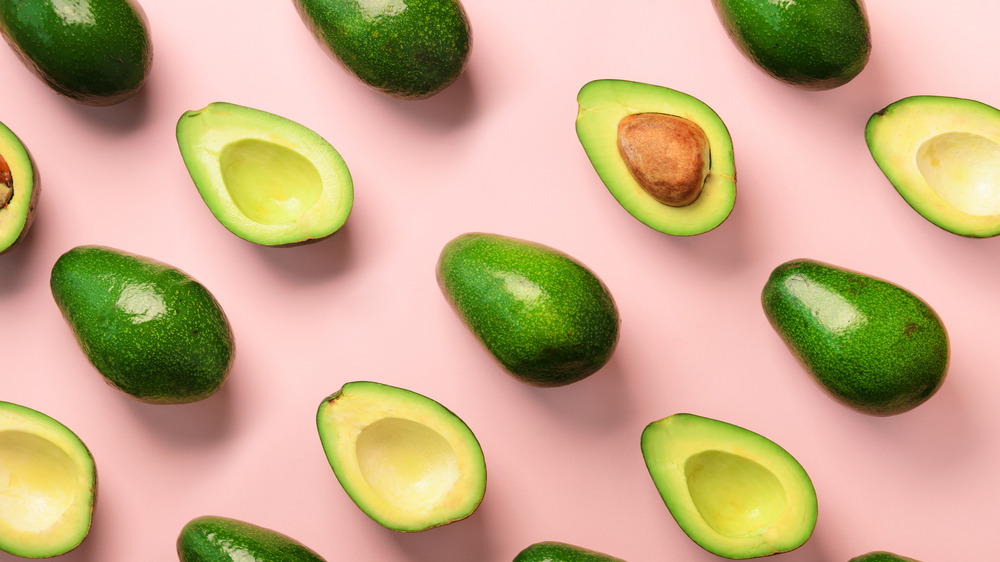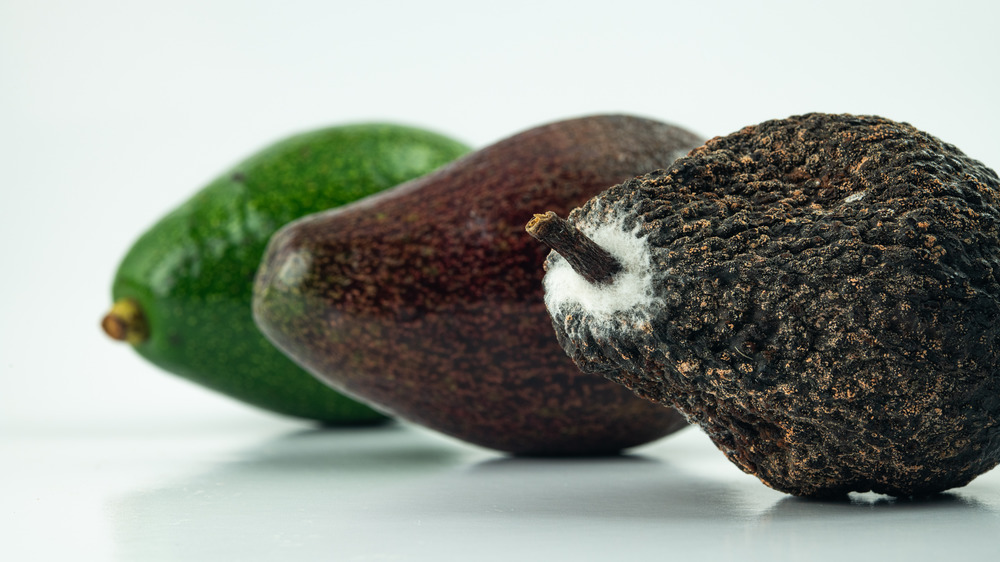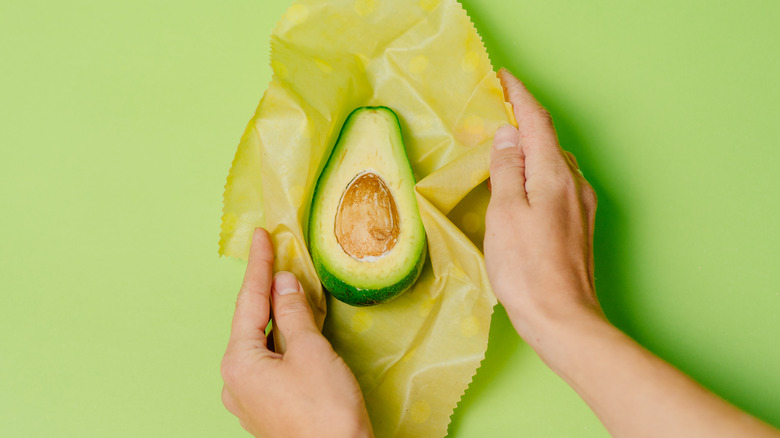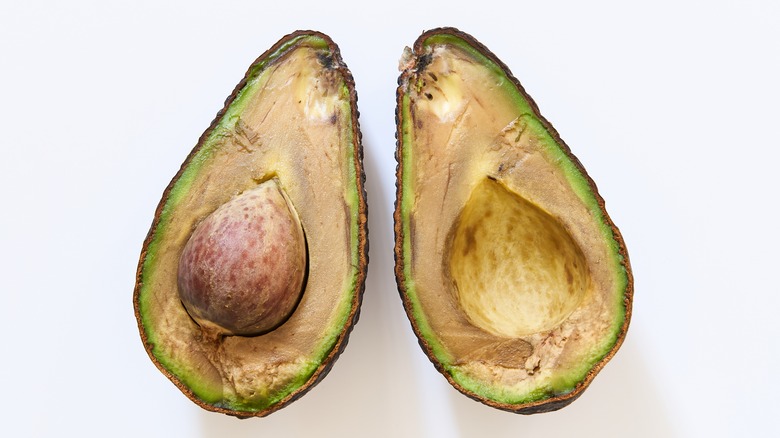Is It Safe To Eat A Brown Avocado?
Picking out the perfect avocado requires some practice at first. You need to know the right color and feel to determine if an avocado is ripe or not, because you don't want to end up spending money on an avocado that you won't be able to use. Fortunately, there are a few simple ways to tell if an avocado is ripe.
Ripe avocados are dark brown on the outside and yield to light pressure (via Eat This, Not That). If an avocado is firm, that means it is not ripe yet. You can also determine the ripeness of an avocado by peeling off the stem. If it comes off easily and you can see green inside, it's ripe and ready to eat. Once an avocado is ripe, however, there is only a short window of time before it starts to brown and become overripe. So how can you tell if it's no longer good to eat?
How to tell if an avocado has gone bad
You can tell an avocado is spoiled or overripe if it develops black skin and can give easily. The color and firmness of avocados change over time as they ripen. If an avocado is mushy and deflated, it has almost certainly gone bad (via Healthline).
You can also tell if an avocado is overripe by cutting it open and examining the flesh. If it has one or two brown spots, it can be salvaged by cutting them away. However, if there are dark streaks or several brown and black spots all throughout the fruit, it is definitely rotten.
Whether or not an overripe avocado is safe to eat depends on how it looks, smells, and tastes. If the flesh is only slightly brown then it's likely safe to eat, but if it is rancid or moldy, it's time to throw it away. Eating a rotten avocado can potentially make you sick.
How to keep avocados green for longer
You've probably heard every tip and trick under the sun claiming to extend the shelf-life of your avocados. While some may sound more bizarre than others, a few of these methods may actually be worth the hype. Once sliced open, experts at Well + Good found that tactics that involved creating a protective barrier around the avocado halves were particularly effective at postponing the browning process by reducing oxygen exposure.
One such method is submerging an avocado face down in cool water and storing it uncovered in the refrigerator, which may keep it greener for up to two days. In lieu of water, the same outcome can be achieved through the use of lemon or lime juice. A sprinkling of citrus over your opened avocado can help slow the oxidation process. If you opt for this method, just be sure to keep the fruit covered while in the fridge. Conversely, experts at Well + Good caution that wrapping a halved avocado in cling wrap or simply leaving the pit intact tend to produce less desirable results.
What to do with brown avocados
Despite your best efforts, you may still find yourself stuck with an avocado past its prime. While a mildly brown avocado is safe to eat, consider these alternative uses for the over-ripened fruit that may help boost hair and skin health.
According to Healthline, those with dry skin may enjoy an avocado honey face mask. Avocados are rich in nutrients, many of which can hydrate skin, such as potassium and vitamin E. In addition, these nutrients may help flight inflammation and alleviate the discomfort of certain skin conditions such as eczema. In a large bowl, mix together one half of an overripe avocado, 1 teaspoon of lemon juice, 1 tablespoon of cold-pressed olive oil, 1 tablespoon of raw honey, and one egg white. For fun, consider adding in a squeeze of orange juice or a tablespoon of oats for a little something extra.
Similarly, overripe avocados can also be used to create a hydrating hair mask. Using a blender, combine one half of an avocado with one egg yolk until the mixture is chunk-free. Lather your hair with the mask and leave it in for 20 minutes. Afterwards, rinse your hair thoroughly with cool water and shampoo and condition as normal before letting your hair air-dry.




